|
The Family and
House of
Gordon - Bydand - Do Well and
Let Them Say Gordon! - Animo Non Astutia
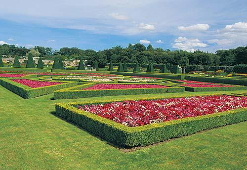  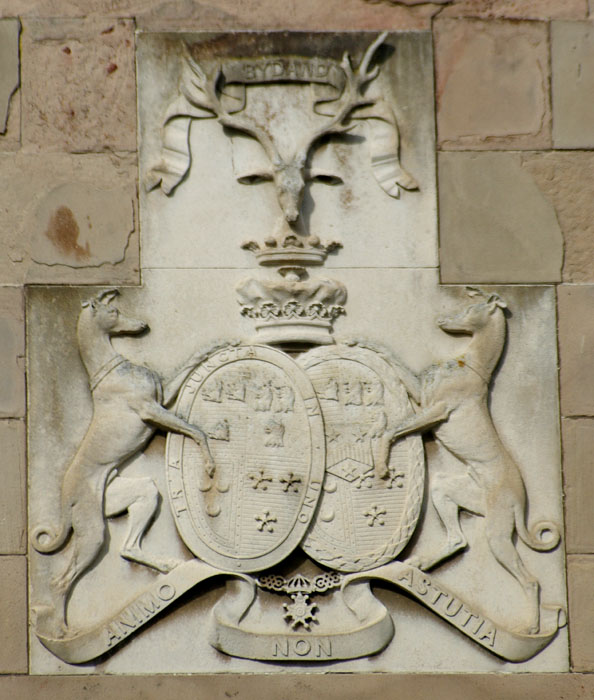 The
first Gordon on record is Richard of Gordon, previously of
Swinton, said to have been the grandson of a famous knight who
slew some monstrous animal in the Merse during the time of King
Malcolm III of Scotland. This Richard was Lord of the Barony of
Gordon in the Merse. Between 1150 and 1160 he granted from his
estate a piece of land to the Monks of St. Mary at Kelso, a
grant which was confirmed by his son Thomas Gordon. Other
notable Gordons from this time include Bertram de Gordon who
wounded King Richard of England with an arrow at Chalons. The
first Gordon on record is Richard of Gordon, previously of
Swinton, said to have been the grandson of a famous knight who
slew some monstrous animal in the Merse during the time of King
Malcolm III of Scotland. This Richard was Lord of the Barony of
Gordon in the Merse. Between 1150 and 1160 he granted from his
estate a piece of land to the Monks of St. Mary at Kelso, a
grant which was confirmed by his son Thomas Gordon. Other
notable Gordons from this time include Bertram de Gordon who
wounded King Richard of England with an arrow at Chalons.
http://www.houseofgordonusa.org
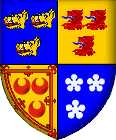 Alicia Gordon, 4th of the Gordon family was the heiress who
married her cousin, Adam Gordon. Adam Gordon was a soldier who
King Alexander III of Scotland sent with King Louis of France to
Palestine. One tradition is that from Adam's grandson, Sir Adam
all of the Gordons in Scotland are descended from. This Adam
Gordon supported Sir William Wallace in 1297 to recapture the
Castle of Wigtown from the English and Adam was made the
Governor. Alicia Gordon, 4th of the Gordon family was the heiress who
married her cousin, Adam Gordon. Adam Gordon was a soldier who
King Alexander III of Scotland sent with King Louis of France to
Palestine. One tradition is that from Adam's grandson, Sir Adam
all of the Gordons in Scotland are descended from. This Adam
Gordon supported Sir William Wallace in 1297 to recapture the
Castle of Wigtown from the English and Adam was made the
Governor.
During the Wars of Scottish Independence Sir Adam Gordon who had
supported William Wallace later supported Robert the Bruce. Adam
was killed leading the Clan Gordon at the Battle of Halidon Hill
in 1333 but his son Sir Alexander Gordon escaped and was the
first Gordon to be deignated "of Huntly".
Chief Sir John Gordon was killed leading the clan at the Battle
of Otterburn, where the English were defeated in 1388. His son,
Chief Sir Adam Gordon was killed leading the clan at the Battle
of Homildon Hill, also known as the Battle of Humbleton Hill on
14 September 1402. The chief left his only child, a daughter and
heiress named Elizabeth Gordon who married by Royal arrangement,
Sir Alexander Seton who was the son of Sir William Seton, 1st Lord
Seton, and who became as a result, 1st Lord Gordon.
Alexander Seton, 1st Earl of Huntly (died July 15, 1470), was a
powerful 15th century Scottish magnate. He was knighted in
1439/40 and was Lord of Badenoch, & Cluny.
He was the son of Alexander Seton (d. 1440) (2nd son of Sir
William Seton of that Ilk), by his spouse Elizabeth Gordon (d.
March 16, 1439), daughter and heiress of Sir Adam Gordon of that
Ilk (k. 1402 at Battle of Homildon Hill). He developed a strong
relationship with William Crichton, the Chancellor of Scotland
after 1439. He divorced his wife Egidia, daughter of Sir John
Hay of Tillibody, in 1438 in order to marry Crichton's daughter
Elizabeth. Before July 3, 1445, King James II of Scotland made
him Earl of Huntly, a new creation. This was part of a deal to
make peace between the Crichton and Douglas-Livingston factions
in the Kingdom. He was embroiled in struggles against the
Douglases, against the Lords of the Isles, and against the
Lindsay Earls of Crawford.
The 1st Earl of
Huntly had by
his first wife a
son who kept the
name of Seton:
- Sir
Alexander
Seton,
ancestor of
the Setons
of Touch,
Hereditary
Armour
Bearer's to
the King;
and the
later
Seton's of
Abercorn,
Baronets of
Abercorn and
de Jure
Lord's
Gordon.
By his second
wife Elizabeth
he had four sons
and four
daughters (all
of whom took the
surname of
Gordon,
including:
- George
Gordon, 2nd
Earl of
Huntly,
directed his
family's
affairs in
Alexander's
later years
and
succeeded
him to the
earldom.
The 1st Earl
of died at
Huntly Castle,
and was buried
in Elgin
Cathedral.
George Seton, (later
Gordon), 2nd Earl of Huntly
(before 1455 8 June 1501)
succeeded his father and was
Chancellor of Scotland from
14981501. He married Elizabeth
Dunbar, the widow of the Count
of Moray, on 20 May 1445. There
were no children from the
marriage; the two were married
for only a short time before he
obtained a divorce in order to
marry Annabella of Scotland,
daughter of James I of Scotland.
The couple had at least one
daughter, though some sources
list them as having as many as
six children. The Earl obtained
an annulment on 24 July 1471 on
the basis of Annabella of
Scotland's consanguinity with
Elizabeth Dunbar. He then
married his mistress, Elizabeth
Hay, on 12 May 1476. Gordon
fought on the King's side
against the Douglases during The
Douglas Rebellion and helped
secure a defeat at the Battle of
Brechin. The 2nd Earl completed
the building work that his
father begun in constructing
Huntly Castle. He died at
Stirling Castle on 8 June 1501.
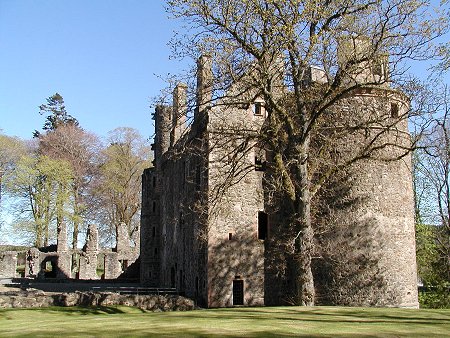 Marquess
of Huntly Marquess
of Huntly is
a title in the
Peerage of
Scotland. It was
created on April
17, 1599, for
George Gordon,
6th Earl of
Huntly, making
it the oldest
existing
marquessate in
Scotland, and
the
second-oldest in
the British
Isles, only the
English
marquessate of
Winchester being
older. The
Gordon family
descends from
Sir Adam Gordon,
of Huntly, who
was killed at
the Battle of
Humbleton Hill
in 1402. He was
succeeded in his
estates by his
daughter
Elizabeth, wife
of Alexander
Seton. Their son
Alexander
assumed the
surname of
Gordon in lieu
of Seton and was
created Earl
of Huntly in
the Peerage of
Scotland in
1445. He was
succeeded by his
son, the second
Earl. He served
as Lord
Chancellor of
Scotland from
1498 to 1501.
His younger son
the Hon. Adam
Gordon married
Elizabeth,
suo jure
Countess of
Sutherland.
Their grandson
John Gordon
succeeded his
grandmother in
the earldom in
1535 (see the
Earl of
Sutherland for
further history
of this branch
of the family).
Lord Huntly's
elder son, the
third Earl, was
a member of the
Council of
Regency in 1517.
He was succeeded
by his grandson,
the fourth Earl.
He was Lord
Chancellor of
Scotland from
1546 to 1562.
However, he was
killed the
latter year and
in 1563 an Act
of Attainder was
passed through
Parliament with
all his titles
forfeited. His
eldest surviving
son George
Gordon was
condemned to
death for
treason in 1563
but was later
pardoned. He
obtained a
reversal of his
father's
attainder in
1567 and served
as Lord
Chancellor of
Scotland. He
was succeeded by
his son, the
aforementioned
sixth Earl. He
was several
times engaged in
rebellion
against the king
and had his
titles forfeited
in 1593. He was
restored to his
titles in 1597
and in 1599 King
James created
him Lord
Gordon of
Badenoch,
Earl of Enzie
and Marquess
of Huntly in
the Peerage of
Scotland. He was
succeeded by his
elder son, the
second Marquess.
In 1632, four
years before his
father's death,
the sixth Earl
was created
Viscount Aboyne
in the Peerage
of Scotland in
his own right,
with remainder
that the title
should be passed
on to his second
son the Hon.
James Gordon on
his death or on
the death of his
father,
whichever came
first. Lord
Huntly was a
supporter of
King Charles I
during the Civil
War and was
beheaded by the
Parliamentarians
in 1649, with
his titles
forfeited. His
fourth son Lord
Charles Gordon
was created Earl
of Aboyne in
1660. On
Huntly's
succession to
the marquessate
in 1636 he was
succeeded in the
viscountcy of
Aboyne according
to the special
remainder by his
second son the
Hon. James (see
the Viscount
Aboyne for
further history
of this title).
On Lord Huntly's
death in 1649
his remaining
titles passed to
his eldest son,
the third
Marquess. He was
granted a
remission of his
father's
attainder by the
exiled
King Charles II
in 1651.
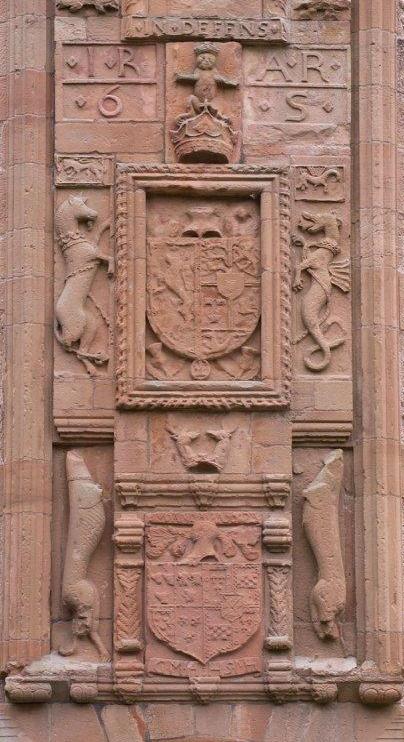 When
he died two
years later the
titles passed to
his son, the
fourth Marquess.
In 1661 the
attainder of
1649 was revoked
by Act of
Parliament. In
1684 Lord Huntly
was created
Lord Badenoch,
Lochaber,
Strathavon,
Balmore,
Auchindoun,
Garthie and
Kincardine,
Viscount of
Inverness,
Earl of
Huntly and Enzie
and Duke of
Gordon. All
four titles were
in the Peerage
of Scotland. He
was succeeded by
his son, the
second Duke. He
was a supporter
of the Old
Pretender.
Gordon married
Lady Henrietta,
daughter of
Charles Mordaunt,
3rd Earl of
Peterborough and
8th Baron
Mordaunt. Their
eldest son, the
third Duke, sat
in the House of
Lords as a
Scottish
Representative
Peer from 1747
to 1752. He was
succeeded by his
eldest son,
Alexander
Gordon, the
fourth Duke.
Known as "Cock
o' the North",
he was a
Scottish
Representative
Peer from 1767
to 1784 and
served as
Lord-Lieutenant
of Aberdeenshire
and as Keeper of
the Great Seal
of Scotland. In
1784 he was
created Baron
Gordon of
Huntley, in
the County of
Gloucester, and
Earl of
Norwich, in
the County of
Norfolk, in the
Peerage of Great
Britain. In 1819
Gordon also
inherited the
barony of
Mordaunt through
his grandmother. When
he died two
years later the
titles passed to
his son, the
fourth Marquess.
In 1661 the
attainder of
1649 was revoked
by Act of
Parliament. In
1684 Lord Huntly
was created
Lord Badenoch,
Lochaber,
Strathavon,
Balmore,
Auchindoun,
Garthie and
Kincardine,
Viscount of
Inverness,
Earl of
Huntly and Enzie
and Duke of
Gordon. All
four titles were
in the Peerage
of Scotland. He
was succeeded by
his son, the
second Duke. He
was a supporter
of the Old
Pretender.
Gordon married
Lady Henrietta,
daughter of
Charles Mordaunt,
3rd Earl of
Peterborough and
8th Baron
Mordaunt. Their
eldest son, the
third Duke, sat
in the House of
Lords as a
Scottish
Representative
Peer from 1747
to 1752. He was
succeeded by his
eldest son,
Alexander
Gordon, the
fourth Duke.
Known as "Cock
o' the North",
he was a
Scottish
Representative
Peer from 1767
to 1784 and
served as
Lord-Lieutenant
of Aberdeenshire
and as Keeper of
the Great Seal
of Scotland. In
1784 he was
created Baron
Gordon of
Huntley, in
the County of
Gloucester, and
Earl of
Norwich, in
the County of
Norfolk, in the
Peerage of Great
Britain. In 1819
Gordon also
inherited the
barony of
Mordaunt through
his grandmother.
His son, the
fifth Duke, was
a General in the
Army and served
as
Lord-Lieutenant
of Aberdeenshire
and as Keeper of
the Great Seal
of Scotland. In
1807 he was
summoned to the
House of Lords
through a writ
of acceleration
in his father's
junior title of
Baron Gordon of
Huntley. Gordon
died without
legitimate issue
in 1836 when the
dukedom and
remaining titles
created in 1684
as well as the
titles created
in 1784 became
extinct. The
barony of
Mordaunt fell
into abeyance
between his
sisters.
Gordon's eldest
sister, Lady
Charlotte
Gordon, married
Charles Lennox,
4th Duke of
Richmond. Their
son Charles
Gordon-Lennox,
5th Duke of
Richmond,
inherited much
of the Gordon
estates and
assumed the
additional
surname of
Gordon. In 1875
the dukedom of
Gordon was
revived when his
son Charles
Henry
Gordon-Lennox,
6th Duke of
Richmond, was
made Duke of
Gordon in the
Peerage of the
United Kingdom
(see the Duke of
Richmond for
further history
of these
titles). The
Duke of Gordon
was succeeded in
the marquessate
of Huntly by his
kinsman George
Gordon, 5th Earl
of Aboyne, who
became the ninth
Marquess (see
the Earl of
Aboyne for
earlier history
of this branch
of the family).
However, the
House of Lords
did not allow
his claims to
the lordship of
Gordon of
Badenoch and
earldom of Enzie
(although they
had been created
at the same time
as the
marquessate)
while his claim
to the ancient
earldom of
Huntly was also
overlooked. Lord
Huntly, who also
held the
subsidiary title
of Lord Gordon
of Strahaven and
Glenlivet, had
earlier been a
Scottish
Representative
Peer from 1796
to 1807. In 1815
he had been
created Baron
Meldrum, of
Morven in the
County of
Aberdeen, in the
Peerage of the
United Kingdom.
He was
succeeded by his
son, the tenth
Marquess. He
represented East
Grinstead and
Huntingdonshire
in the House of
Commons and
served as
Lord-Lieutenant
of Aberdeenshire.
His eldest son,
the eleventh
Marquess, was a
Liberal
politician and
served briefly
under William
Gladstone as
Captain of the
Honourable Corps
of
Gentlemen-at-Arms
in 1881. He was
succeeded by his
great-nephew,
the twelfth
Earl. He was the
son of
Lieutenant-Colonel
(Granville
Cecil) Douglas
Gordon
(18831930), son
of Granville
Armyn Gordon
(18561907),
sixth son of the
tenth Marquess.
As of 2007 the
titles are held
by the twelfth
Earl's son,
Granville
Charles Gomer
Gordon, 13th
Marquess of
Huntly, 9th Earl
of Aboyne, 9th
Lord Gordon of
Strathavon and
Glenlivet and
5th Baron
Meldrum, who
succeeded in
1987. He is
Chief of Clan
Gordon.
Several other
members of the
Gordon family
have also gained
distinction. The
Hon. Lord John
Gordon, younger
son of the first
Marquess, was
created Viscount
Melgum in 1627.
Lord Adam Gordon
(d. 1801),
younger son of
the second Duke,
was a General in
the Army. Lord
William Gordon
(17441823),
second son of
the third Duke,
was a
Vice-Admiral in
the Royal Navy.
Lord George
Gordon, third
and youngest son
of the third
Duke, sat as
Member of
Parliament for
Ludgershall but
is best
remembered for
his conversion
to Judaism.
Charles Gordon
(17981878),
illegitimate son
of the fifth
Duke, was an
Admiral in the
Royal Navy. Lord
John Frederick
Gordon
(17991878),
third son of the
ninth Marquess,
was an Admiral
in the Royal
Navy. He married
Lady Augusta
Fitzclarence,
daughter of King
William IV by
his mistress
Dorothy Jordan.
Laurence George
Frank Gordon
(18641943),
grandson of
Lieutenant-Colonel
Lord Francis
Arthur Gordon
(18081857),
sixth son of the
ninth Marquess,
was a
Brigadier-General
in the Army.
Lord Douglas
Gordon, fourth
son of the tenth
Marquess, was
Member of
Parliament for
Huntingdon.
Before the
passing of the
Peerage Act
1963, which
granted all
Scottish peers a
seat in the
House of Lords,
the Marquesses
of Huntly sat in
the House of
Lords in virtue
of their junior
title of Baron
Meldrum, which
was in the
Peerage of the
United Kingdom.
The family
seat is Aboyne
Castle. The
family also
previously owned
Huntly Castle,
Huntly,
Aberdeenshire.
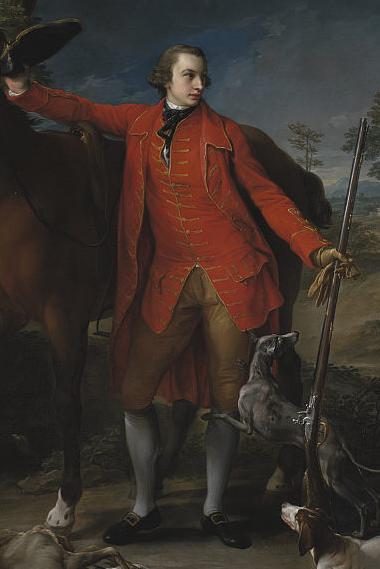 Earl of Huntly (1445) Earl of Huntly (1445)
- Alexander Gordon, 1st Earl of Huntly (d. 1470)
- George Gordon, 2nd Earl of Huntly (d. 1502)
- Alexander Gordon, 3rd Earl of Huntly (d. 1524) was the son of George Gordon, 2nd Earl of Huntly and either his first wife, Annabella of Scotland, or his mistress and second wife, Lady Elizabeth Hay. Alexander married by contract, firstly, Lady Jean Stewart, daughter of John Stewart, 1st Earl of Atholl and Margaret Douglas,(daughter of Archibald Douglas, 5th Earl of Douglas) on 14 October 1474. He married, secondly, Elizabeth Gray, daughter of Andrew Gray, 2nd Lord Gray and Janet Keith, some time after 27 July 1511. Alexander died on 21 January 1523/1524.
- George Gordon, 4th Earl of Huntly (15141562) (forfeit 1563)
- George Gordon, 5th Earl of Huntly (d. 1576) (restored 1565)
- George Gordon, 6th Earl of Huntly (15621636) (created Marquess of Huntly in 1599)
Marquesses of Huntly (1599)
Dukes of Gordon (1684)
- George Gordon, 1st Duke of Gordon, 4th Marquess of Huntly (16491716)
- Alexander Gordon, 2nd Duke of Gordon, 5th Marquess of Huntly (d. 1728)
- Cosmo George Gordon, 3rd Duke of Gordon, 6th Marquess of Huntly (c. 17201752)
- Alexander Gordon, 4th Duke of Gordon, 7th Marquess of Huntly (17431827)
- George Gordon, 5th Duke of Gordon, 8th Marquess of Huntly (17701836)
Marquesses of Huntly (1599; Reverted)
- Subsidiary titles: Earl of Aboyne and Lord Gordon of Strathaven and Glenlivet (1660; Peerage of Scotland), Baron Meldrum (1815; Peerage of the United Kingdom)
The Heir Apparent is the present holder's eldest son Alastair Granville Gordon, Earl of Aboyne (b. 1973).
The Heir Apparent's Heir Apparent is his son Cosmo Alistair Gordon, Lord Strathavon (b. 2009).
|
 |
 Earl of Huntly (1445)
Earl of Huntly (1445)



 The
first Gordon on record is Richard of Gordon, previously of
Swinton, said to have been the grandson of a famous knight who
slew some monstrous animal in the Merse during the time of King
Malcolm III of Scotland. This Richard was Lord of the Barony of
Gordon in the Merse. Between 1150 and 1160 he granted from his
estate a piece of land to the Monks of St. Mary at Kelso, a
grant which was confirmed by his son Thomas Gordon. Other
notable Gordons from this time include Bertram de Gordon who
wounded King Richard of England with an arrow at Chalons.
The
first Gordon on record is Richard of Gordon, previously of
Swinton, said to have been the grandson of a famous knight who
slew some monstrous animal in the Merse during the time of King
Malcolm III of Scotland. This Richard was Lord of the Barony of
Gordon in the Merse. Between 1150 and 1160 he granted from his
estate a piece of land to the Monks of St. Mary at Kelso, a
grant which was confirmed by his son Thomas Gordon. Other
notable Gordons from this time include Bertram de Gordon who
wounded King Richard of England with an arrow at Chalons. Alicia Gordon, 4th of the Gordon family was the heiress who
married her cousin, Adam Gordon. Adam Gordon was a soldier who
King Alexander III of Scotland sent with King Louis of France to
Palestine. One tradition is that from Adam's grandson, Sir Adam
all of the Gordons in Scotland are descended from. This Adam
Gordon supported Sir William Wallace in 1297 to recapture the
Castle of Wigtown from the English and Adam was made the
Governor.
Alicia Gordon, 4th of the Gordon family was the heiress who
married her cousin, Adam Gordon. Adam Gordon was a soldier who
King Alexander III of Scotland sent with King Louis of France to
Palestine. One tradition is that from Adam's grandson, Sir Adam
all of the Gordons in Scotland are descended from. This Adam
Gordon supported Sir William Wallace in 1297 to recapture the
Castle of Wigtown from the English and Adam was made the
Governor. Marquess
of Huntly is
a title in the
Peerage of
Scotland. It was
created on April
17, 1599, for
George Gordon,
6th Earl of
Huntly, making
it the oldest
existing
marquessate in
Scotland, and
the
second-oldest in
the British
Isles, only the
English
marquessate of
Winchester being
older. The
Gordon family
descends from
Sir Adam Gordon,
of Huntly, who
was killed at
the Battle of
Humbleton Hill
in 1402. He was
succeeded in his
estates by his
daughter
Elizabeth, wife
of Alexander
Seton. Their son
Alexander
assumed the
surname of
Gordon in lieu
of Seton and was
created Earl
of Huntly in
the Peerage of
Scotland in
1445. He was
succeeded by his
son, the second
Earl. He served
as Lord
Chancellor of
Scotland from
1498 to 1501.
His younger son
the Hon. Adam
Gordon married
Elizabeth,
suo jure
Countess of
Sutherland.
Their grandson
John Gordon
succeeded his
grandmother in
the earldom in
1535 (see the
Earl of
Sutherland for
further history
of this branch
of the family).
Lord Huntly's
elder son, the
third Earl, was
a member of the
Council of
Regency in 1517.
He was succeeded
by his grandson,
the fourth Earl.
He was Lord
Chancellor of
Scotland from
1546 to 1562.
However, he was
killed the
latter year and
in 1563 an Act
of Attainder was
passed through
Parliament with
all his titles
forfeited. His
eldest surviving
son George
Gordon was
condemned to
death for
treason in 1563
but was later
pardoned. He
obtained a
reversal of his
father's
attainder in
1567 and served
as Lord
Chancellor of
Scotland.
Marquess
of Huntly is
a title in the
Peerage of
Scotland. It was
created on April
17, 1599, for
George Gordon,
6th Earl of
Huntly, making
it the oldest
existing
marquessate in
Scotland, and
the
second-oldest in
the British
Isles, only the
English
marquessate of
Winchester being
older. The
Gordon family
descends from
Sir Adam Gordon,
of Huntly, who
was killed at
the Battle of
Humbleton Hill
in 1402. He was
succeeded in his
estates by his
daughter
Elizabeth, wife
of Alexander
Seton. Their son
Alexander
assumed the
surname of
Gordon in lieu
of Seton and was
created Earl
of Huntly in
the Peerage of
Scotland in
1445. He was
succeeded by his
son, the second
Earl. He served
as Lord
Chancellor of
Scotland from
1498 to 1501.
His younger son
the Hon. Adam
Gordon married
Elizabeth,
suo jure
Countess of
Sutherland.
Their grandson
John Gordon
succeeded his
grandmother in
the earldom in
1535 (see the
Earl of
Sutherland for
further history
of this branch
of the family).
Lord Huntly's
elder son, the
third Earl, was
a member of the
Council of
Regency in 1517.
He was succeeded
by his grandson,
the fourth Earl.
He was Lord
Chancellor of
Scotland from
1546 to 1562.
However, he was
killed the
latter year and
in 1563 an Act
of Attainder was
passed through
Parliament with
all his titles
forfeited. His
eldest surviving
son George
Gordon was
condemned to
death for
treason in 1563
but was later
pardoned. He
obtained a
reversal of his
father's
attainder in
1567 and served
as Lord
Chancellor of
Scotland. When
he died two
years later the
titles passed to
his son, the
fourth Marquess.
In 1661 the
attainder of
1649 was revoked
by Act of
Parliament. In
1684 Lord Huntly
was created
Lord Badenoch,
Lochaber,
Strathavon,
Balmore,
Auchindoun,
Garthie and
Kincardine,
Viscount of
Inverness,
Earl of
Huntly and Enzie
and Duke of
Gordon. All
four titles were
in the Peerage
of Scotland. He
was succeeded by
his son, the
second Duke. He
was a supporter
of the Old
Pretender.
Gordon married
Lady Henrietta,
daughter of
Charles Mordaunt,
3rd Earl of
Peterborough and
8th Baron
Mordaunt. Their
eldest son, the
third Duke, sat
in the House of
Lords as a
Scottish
Representative
Peer from 1747
to 1752. He was
succeeded by his
eldest son,
Alexander
Gordon, the
fourth Duke.
Known as "Cock
o' the North",
he was a
Scottish
Representative
Peer from 1767
to 1784 and
served as
Lord-Lieutenant
of Aberdeenshire
and as Keeper of
the Great Seal
of Scotland. In
1784 he was
created Baron
Gordon of
Huntley, in
the County of
Gloucester, and
Earl of
Norwich, in
the County of
Norfolk, in the
Peerage of Great
Britain. In 1819
Gordon also
inherited the
barony of
Mordaunt through
his grandmother.
When
he died two
years later the
titles passed to
his son, the
fourth Marquess.
In 1661 the
attainder of
1649 was revoked
by Act of
Parliament. In
1684 Lord Huntly
was created
Lord Badenoch,
Lochaber,
Strathavon,
Balmore,
Auchindoun,
Garthie and
Kincardine,
Viscount of
Inverness,
Earl of
Huntly and Enzie
and Duke of
Gordon. All
four titles were
in the Peerage
of Scotland. He
was succeeded by
his son, the
second Duke. He
was a supporter
of the Old
Pretender.
Gordon married
Lady Henrietta,
daughter of
Charles Mordaunt,
3rd Earl of
Peterborough and
8th Baron
Mordaunt. Their
eldest son, the
third Duke, sat
in the House of
Lords as a
Scottish
Representative
Peer from 1747
to 1752. He was
succeeded by his
eldest son,
Alexander
Gordon, the
fourth Duke.
Known as "Cock
o' the North",
he was a
Scottish
Representative
Peer from 1767
to 1784 and
served as
Lord-Lieutenant
of Aberdeenshire
and as Keeper of
the Great Seal
of Scotland. In
1784 he was
created Baron
Gordon of
Huntley, in
the County of
Gloucester, and
Earl of
Norwich, in
the County of
Norfolk, in the
Peerage of Great
Britain. In 1819
Gordon also
inherited the
barony of
Mordaunt through
his grandmother.